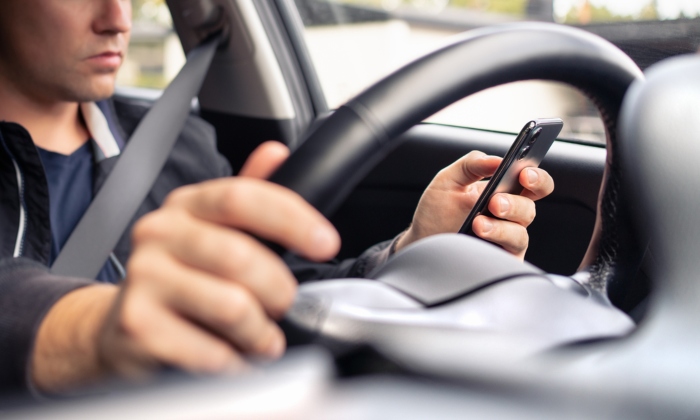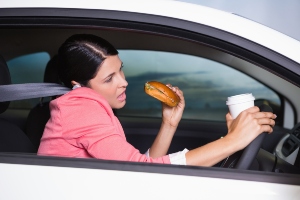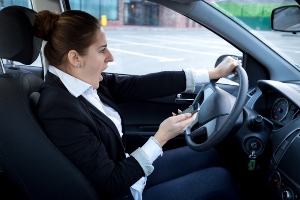Contact Us
Two Pershing Square 2300 Main Street, Suite 170 Kansas City MO 64108Two Pershing Square
2300 Main Street, Suite 170
Kansas City, MO 64108
Directions
Telephone: (816) 221-6600
Toll Free: 1 (877) 284-6600
Fax: (816) 221-6612

According to NHTSA, the riskiest driving behaviors include drunk driving, drug-impaired driving, distracted driving, lack of seat belts, speeding and drowsy driving. Many drivers still engage in unsafe driving behaviors, needlessly endangering not just themselves and their passengers but others on the road. Knowing more about these risky driving behaviors can help you be a more defensive driver.
The following are common dangerous driving behaviors that often contribute to accidents.
Drunk Driving
Every day, about 37 people in the U.S. die in drunk driving accidents; that translates to one person every 39 minutes (2021 data, NHTSA) or 13,384 alcohol-impaired driving deaths.
Drug-impaired driving
“Marijuana can actually make you a safer driver.” Not true. Research shows that marijuana impairs motor skills, lane tracking and cognitive functions.
Some drugs can impair the ability to drive because they slow coordination, judgment and reaction times. Others can make you more aggressive and reckless. Some prescription and over-the-counter medicines can cause extreme drowsiness, dizziness, and other side effects.
Impaired drivers cannot accurately assess their own impairment. Bottom line, driving while impaired by any substance is against the law
Distracted Driving
 According to the NHTSA, distracted driving claimed 3,522 lives in 2021. It is one of the leading causes of deadly crashes since it can impact you manually, visually and cognitively.
According to the NHTSA, distracted driving claimed 3,522 lives in 2021. It is one of the leading causes of deadly crashes since it can impact you manually, visually and cognitively.Wearing a seat belt
 The good news is that, according to NHTSA, seat belt use in passenger vehicles saved an estimated 14,955 lives in 2017.
The good news is that, according to NHTSA, seat belt use in passenger vehicles saved an estimated 14,955 lives in 2017.
Seat belts save lives and should be worn whether in the front seat or back. Do not rely on air bags alone. They will not protect you unless you are wearing a proper restraint. The force of an airbag can cause severe injuries when not secured by a seat belt.
Speeding
In 2021, speeding killed 12,330 people (NHTSA). It is the biggest unsafe driving behavior in the U.S. and is estimated to be a contributing factor in over one-third of all fatal accidents nationwide.
The probability of serious injury, or even death, increases with impacts at higher speeds, doubling for every 10 MPH over 50 MPH a vehicle travels.
Be a safe driver. Know the speed limit. Evaluate driving conditions. Adjust your speed as needed.
Drowsy driving
 Being fatigued while driving can be as dangerous as driving impaired (under the influence of alcohol).
Being fatigued while driving can be as dangerous as driving impaired (under the influence of alcohol).Determining a precise number of drowsy-driving crashes, injuries, and fatalities is not yet possible; however, NHTSA estimates that in 2017, 91,000 police-reported crashes involved drowsy drivers. These crashes led to an estimated 50,000 people injured and nearly 800 deaths.
Reckless Driving and/or Road Rage
Reckless driving includes things such as tailgating, cutting off other drivers, weaving in and out of traffic, making sudden lane changes.
Road rage is a “fit of violent anger by the driver of an automobile, especially one directed toward and endangering other motorists or pedestrians.” It may include swerving in front of another vehicle, stopping abruptly, blocking other vehicles from passing, purposely making contact with another vehicle.
Aggressive driving can easily graduate into road rage.
 Failing to Yield or give right of way.
Failing to Yield or give right of way.Any of these dangerous driving behaviors can contribute to an accident. Know whether you are engaging in unsafe driving behaviors.
If you have been injured in a motor vehicle accident in which you suffered serious injuries due to risky, unsafe driving behaviors, having an attorney who is your advocate can offer you peace of mind during your recovery. Call Nash & Franciskato at (877) 284-6600.
One of our experienced staff will speak with you personally and will provide you with a free, no-obligation review of your case.
START YOUR FREE CASE REVIEW TODAY
If you would like to receive news and blog updates on a regular basis, sign up to receive our email newsletter. Your email address will only be used to send you our newsletter and respond to inquiries.
RESOURCES FOR YOU
Past results afford no guarantee of future results and each case is different and is judged on its own merits. The choice of a lawyer is an important decision and should not be based solely upon advertisements.